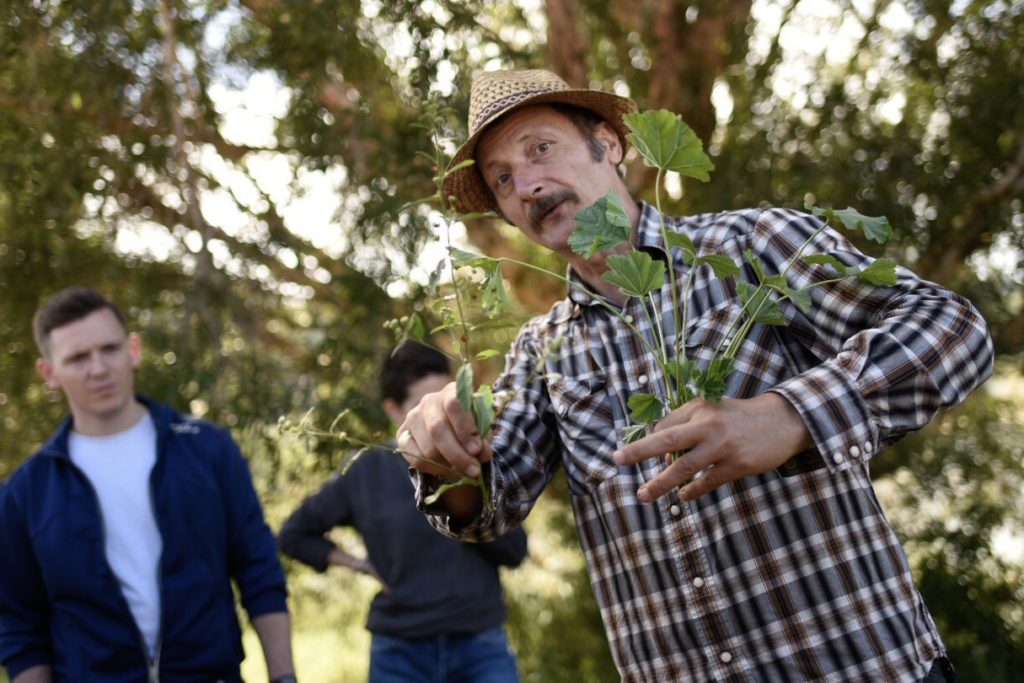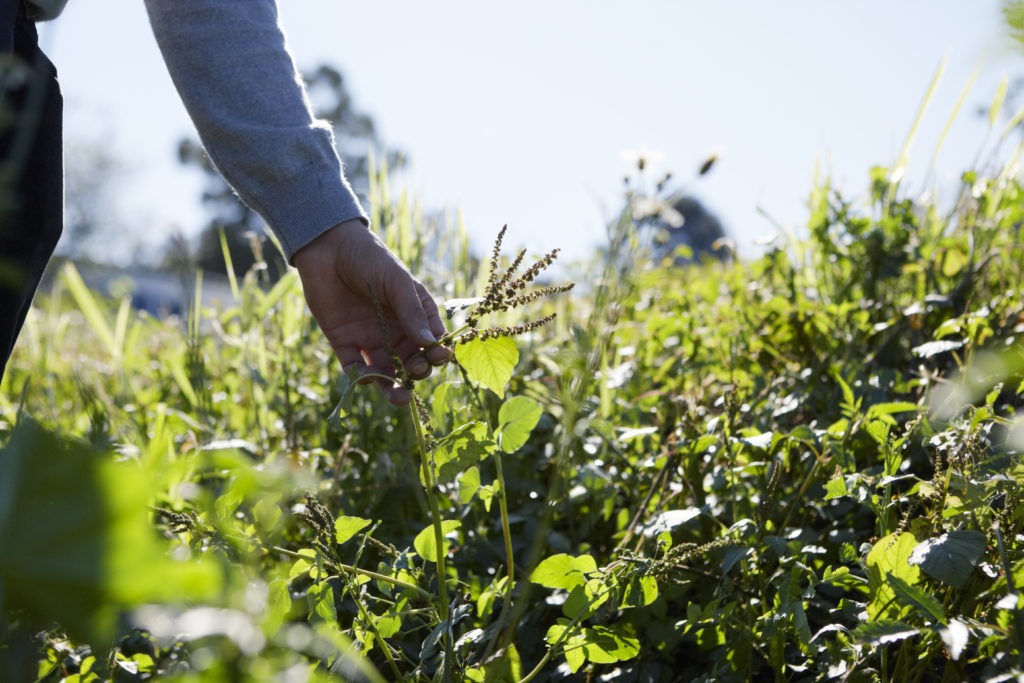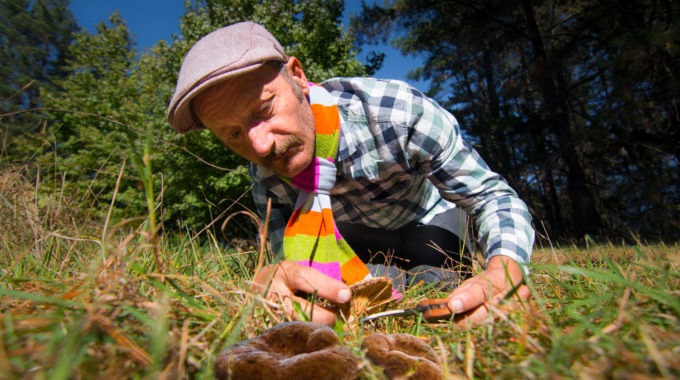Foraging: a forgotten art rediscovered
Edible plants are everywhere – possibly even in your own backyard. But without the right knowledge, it can be hard to know what’s edible and what could make you sick.
Diego Bonetto (AKA “The Weedy One”, pictured above) grew up foraging for weeds, berries, nuts and mushrooms in Italy, and when he moved to Sydney in the 1990s, he soon realised that there was a feast of foraging to be found here in Australia. People just didn’t know how to find it. He began studying Australian native plants and gathering as much knowledge as he could find. He sensed that there was a genuine longing for people to get back to basics – to rekindle that connection with the natural world.
Bonetto now runs private and public edible food foraging workshops and tours. He also works with chefs, herbalists, environmentalists and cultural workers to raise awareness of what our environment has to offer. His workshops provide lessons in mushroom foraging, wild food and medicine, and the flavours and seasonal availability of edible wild natives.
He also regularly shares photos and information on his popular Instagram account, focusing on a different type of plant each week. He’s featured such plants as fleabane, dock and edible pine mushrooms. He says his aim is to “empower people with knowledge”.

How to get started with foraging
“First of all, get a notebook and start collecting information,” Bonetto advises. “Talk with your neighbours or your gardening friends. Lots of knowledge is readily available in your immediate surroundings. It’s amazing how much people know without realising.
“For instance, many people would have picked wild mulberries as a child. If you did, that means you have experience in foraging. People think you need special skills, but it’s just cultivating the knowledge that you already had and growing that knowledge. Through books, through videos, though workshops and through talking to other people.”
Bonetto recommends starting small, with a few plants, until you become familiar with those plants and can feel 100 percent sure that what you’re looking at is what you think it is.
“From there you grow,” he says. “You just grow your information, grow your knowledge, one plant at a time. You will never stop learning.”

Food right under your nose
Edible plants can be in your own backyard, and even in the pots that you plant your geraniums in – if you take a look you might find some wood sorrel, Bonetto says. Street trees can also grow seasonal treats, such as the mulberries that you picked as a child.
“Your neighbourhood resources are not buried that deeply,” Bonetto says. “It’s just a matter of locating them, and waiting for the right season.”
One area that foraging newbies definitely shouldn’t rush into is wild mushrooms. Bonetto recommends that you should only go foraging for wild mushrooms once you have enough knowledge. You should also never go mushrooming alone.
“Lots of people make the mistake with field mushrooms, thinking that they look like the mushrooms that you buy at the supermarket,” he says. “Mushrooming is something that requires that next level of attention; that next level of knowledge.”

Snapchat for plants
A new tool for foragers that could come in handy is PlantSnap: the world’s most accurate, comprehensive plant identification app. The app has become a partner for Snapchat’s Scan platform, which means users can identify thousands of plants via the Snapchat Camera.
All you have to do is take a pic of the plant, and PlantSnap’s machine learning algorithm will analyse and recognise the plant and instantly display its name on the screen. The scanned plant photo and naming result will be shown inside the Snapchat user interface. You’ll also get a link to learn more about the plant through the app.
PlantSnap can instantly identify plants of all kinds with a click of a button, including flowers, trees and succulents. The app already has 600,000+ plants in its database. This makes it an easy way for foragers to identify edible plants. Just stay away from those mushrooms.
PlantSnap is available for iOS and Android devices, with free and premium options.
To find out more about Bonetto’s foraging workshops and tours, head to his website.









